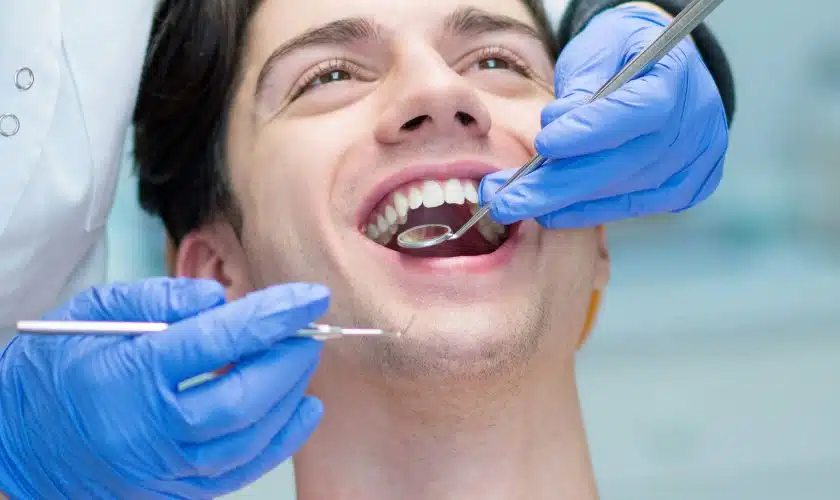When it comes to oral health, prevention is ideal—but restoration is often essential. Restorative dentistry plays a crucial role in helping individuals maintain healthy teeth, restore function, and improve aesthetics after damage caused by decay, trauma, or wear.
While many patients focus on the immediate benefits of a procedure, the true value of restorative dentistry is seen over the long term, especially when supported by modern tools like advanced dental software.
What Is Restorative Dentistry?
Restorative dentistry encompasses a wide range of procedures aimed at repairing or replacing damaged or missing teeth. These include dental fillings, crowns, bridges, implants, inlays, onlays, and root canal treatments. The primary goal is to restore proper function and appearance while preserving as much of the natural tooth structure as possible.
As dental technology evolves, the field of restorative dentistry has embraced innovations that improve accuracy, comfort, and outcomes. One of the most transformative developments in recent years has been the growing influence of dental software on treatment planning and execution.
Long-Term Oral Health Benefits
1. Preservation of Natural Teeth
Restorative dentistry focuses on saving natural teeth whenever possible. Treatments like fillings and root canals help avoid extractions, maintaining jawbone density and facial structure. Keeping your natural teeth reduces the risk of misalignment, bite problems, and further tooth loss.
2. Improved Functionality
From chewing to speaking, healthy teeth are essential for daily activities. Restorative procedures restore full function, allowing patients to enjoy their favorite foods and communicate clearly. Proper bite alignment also protects the temporomandibular joints (TMJ), preventing strain and discomfort.
3. Prevention of Future Issues
Early investment in restorative treatments can prevent minor problems from becoming major ones. For example, filling a cavity promptly can prevent the need for a root canal later. Addressing tooth loss with implants or bridges stops adjacent teeth from shifting, which can lead to gum disease or bite misalignment.
4. Enhanced Aesthetics and Confidence
Restorative treatments do more than just fix teeth—they also improve smiles. Natural-looking crowns, tooth-colored fillings, and lifelike implants can enhance appearance and boost self-esteem. This improvement in confidence has lasting effects on both personal and professional relationships.
5. Financial Savings Over Time
Though restorative procedures may seem costly upfront, they often lead to savings in the long run. Ignoring dental problems typically results in more complex, expensive treatments later. Investing early in restorative dentistry means fewer visits, reduced need for emergency care, and a longer-lasting smile.
The Influence of Dental Software
Modern dental software has revolutionized how restorative procedures are planned and delivered. These tools bring precision, efficiency, and predictability to dental care, offering a higher level of service for patients.
1. Digital Diagnostics and Imaging
Advanced imaging tools allow dentists to view detailed 3D scans of the mouth. This helps in detecting issues that might be missed with traditional X-rays and provides a clearer picture for diagnosis and treatment planning.
2. Computer-Aided Design and Manufacturing (CAD/CAM)
CAD/CAM technology enables the creation of highly accurate dental restorations such as crowns, veneers, and inlays. With this software, dentists can design, fabricate, and fit restorations in a single visit. This saves time for both patient and practitioner while ensuring a precise fit.
3. Predictable Treatment Planning
With software-driven simulations, dentists can show patients how their smile will look after treatment. This improves communication and allows patients to make informed decisions. It also minimizes surprises and enhances satisfaction.
4. Efficient Record-Keeping and Follow-Up
Dental software streamlines patient records, tracking past procedures and treatment progress over time. This is especially helpful in restorative dentistry, where monitoring the long-term success of implants, crowns, or bridges is vital.
5. Integration with Other Technologies
Dental software often integrates with other digital tools like intraoral scanners and 3D printers. This seamless connectivity improves workflow and allows for the customization of restorative components, contributing to more durable and aesthetic results.
Patient Experience and Comfort
Another long-term benefit of restorative dentistry is the improved patient experience. Thanks to technology and the influence of dental software, procedures are now faster, less invasive, and more comfortable than ever before. Patients spend less time in the chair and enjoy better post-treatment outcomes, which encourages continued care and follow-up visits.
Moreover, the emotional and psychological comfort of having a fully functional, natural-looking smile cannot be overstated. Many patients report feeling younger, more attractive, and more socially confident after completing their restorative dental journey.
Investing in restorative dentistry is more than just fixing a problem—it’s a commitment to your long-term health, appearance, and quality of life. With the powerful influence of dental software, these treatments are now more efficient, accurate, and patient-friendly than ever. Whether you’re repairing a chipped tooth or replacing multiple missing teeth, the long-term benefits are clear: improved oral function, aesthetic appeal, financial savings, and enhanced well-being.
Choosing restorative care today sets the foundation for a healthier, brighter tomorrow.
